The border fortress in Spiš was built at the turn of the 13th and 14th centuries. Stará Ľubovňa that belongs to Slovakia today was then a part of the Hungarian kingdom. When in 1412, Polish King Władysław II Jagiełło granted a loan to Sigismund of Luxemburg, part of the land of Spiš, including the Ľubovňa Castle, was transferred to the Polish ruler. It was a pledge of the borrowed 37 thousand Czech groschen, the equivalent of seven tons of pure silver. Until the loan was repaid, the pledged lands were incorporated into Poland.
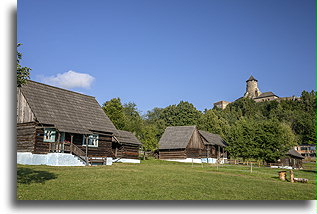
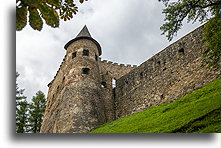
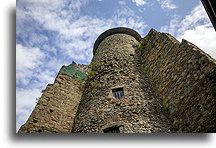
While visiting the castle, I came across a translation from a 15th-century document.
We Sigismund, Holy Roman Emperor by Grace of God, ... and King of Hungary, Bohemia, ... we acknowledge that ... we have ... really received thirty-seven thousand heaps of thick groschen of new coins of Czech monetization in correct and fair weight, from the Grand Duke Wladyslaw, King of Poland ... and we would like to assure this Sir Wladyslaw, King of Poland about repaying back all this money, and ... we want to guarantee its requitement. Therefore, we will provide him and his descendants the territories, i.e. our castle of Stara Lubovna both with town, and town of Podolinec both with little fortress and the villages belonging to them as well with towns and bourgs (14 of them) mentioned below situated at the area of Spiš in the Esztergom diocese. All these mentioned lands castles and bourgs, towns and villages will be held, owned and possessed by the time we or our descendants repay him or his descendants ... thirty-seven thousand heaps of thick Czech groschen of right and correct weight or this amount in gold or silver.
Signed in Zahreb ... Anno Domini 1412
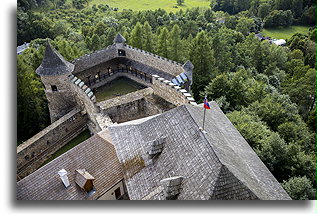
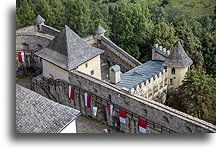
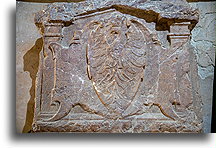
From 1412, the Ľubovňa Castle was the seat of Polish starosts, the most eminent family ruling here were the Lubomirski family. Starosts managed not only the stronghold, but also sixteen surrounding towns. The castle was visited by Polish kings Władysław II Jagiełło, John I Albert, John II Casimir and John III Sobieski returning after Battle of Vienna. The loan taken out in 1412 has never been repaid, yet in 1772 the castle was taken over by the Hungarians. It was a consequence of the first partition of Poland. This is how the 360-year-long Polish rule in the pledged area in Spiš ended.
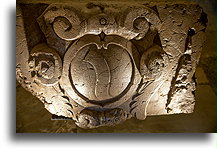
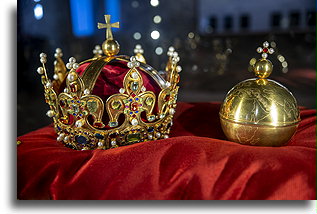
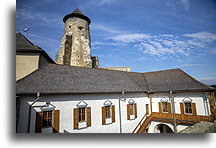
The Polish Crown Jewels brought from Wawel Royal Castle to the Ľubovňa has been kept here for 6 years. They were transferred here in 1655 for a fear of being plundered by the Swedes who had flooded Poland during the Deluge. Today, at the castle of Ľubovňa, we can see is a replica of these jewels, the crown of Bolesław the Brave, a scepter and a coronation orb. Originals made of pure gold, used for the coronation of Polish kings in the years 1320-1764, have not survived to our times. Looted in 1794 from the treasury in Wawel by the Prussian army, they were melted down in 1811 by order of the Prussian king Frederick William III.
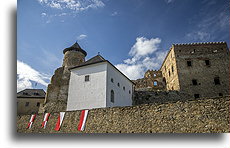
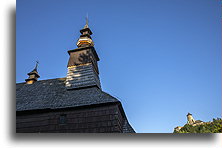
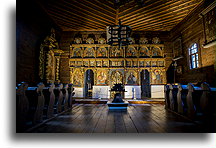
After the castle was taken over by the Hungarians, it lost its importance and began to fall into ruin. The first private owner was the Hungarian nobleman Juraj Raisz, the second and last was Polish magnate Zamoyski family. The Lubovňa Castle was in their hands in the years 1882 - 1945, when the property was taken over by the authorities of communist Czechoslovakia.




